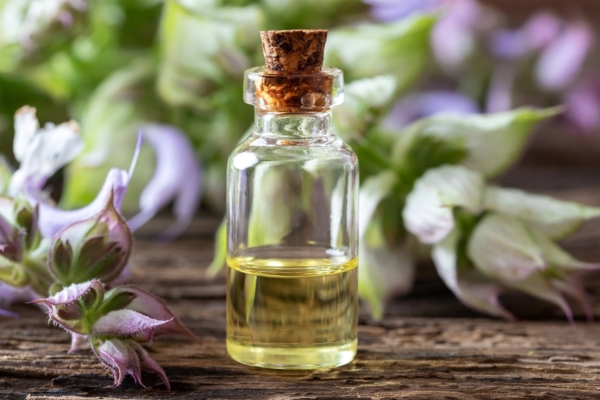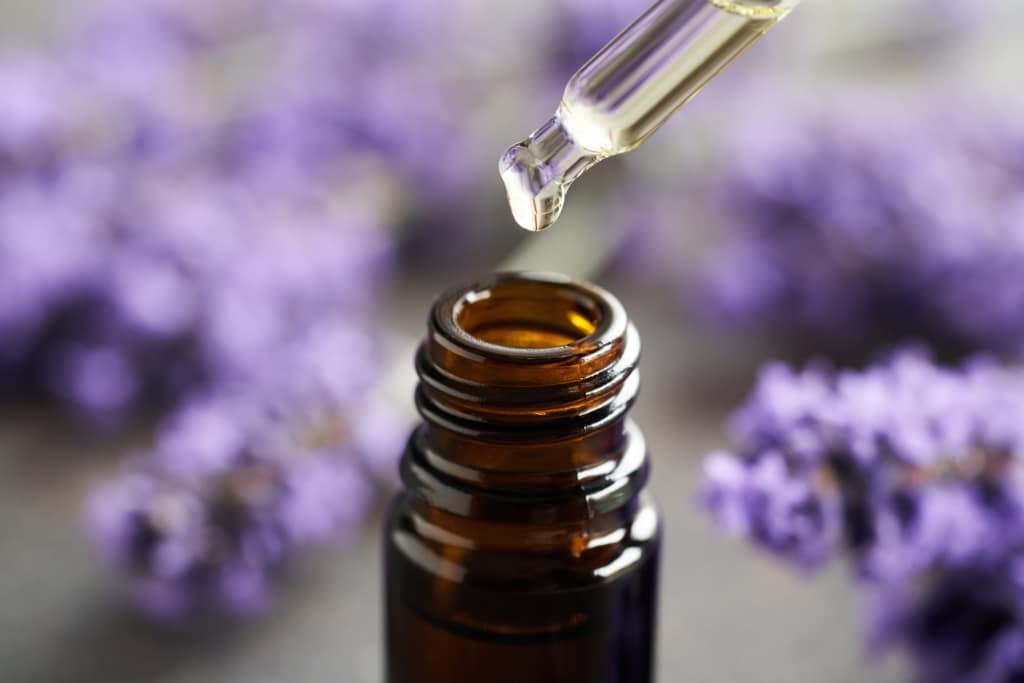
It starts with a tickle in your throat, then a stuffy nose. Before you know it, you’re wrapped in blankets, battling congestion that makes it hard to breathe. Whether it’s seasonal allergies, a lingering cold, or dry winter air wreaking havoc on your sinuses, nothing is more frustrating than struggling to take a full, clear breath.
Now imagine this: You light up some natural incense or fill your essential oil diffuser, and within moments, a crisp, invigorating scent of aromatic plants swirls through the air. Your sinus pressure lowers, your airways open, and suddenly, breathing feels effortless again. That’s the power of aromatic medicine – nature’s solution for soothing, clearing, and supporting your respiratory system.
In this article, we’ll explore how aromatherapy can be a game-changer for congestion relief, revealing which aromatic plants are most effective in offering respiratory support. Learn how aromatics can help support the lungs and which essential oil combinations work best for battling congestion. Whether you need a powerful decongestant steam, a soothing chest rub, or an uplifting diffuser blend, these natural remedies can provide comfort when you need it most. Let’s dive in and discover the best aromatherapy blends for respiratory health!
How Aromatherapy Supports Respiratory Health
Aromatic plants release volatile compounds, known as essential oils, into the air we breathe. When inhaled, these tiny molecules travel deep into both the upper and lower respiratory tract, where they are absorbed into tissues and enter the bloodstream. Once inside the body, their medicinal constituents get to work – helping to clear congestion, soothe inflamed airways, and support overall respiratory health.
Certain aromatic herbs act as natural bronchodilators, opening up the lungs to make breathing easier, while others have mucolytic and expectorant properties that help break down and clear mucus from the airways. Many essential oils also possess antimicrobial, antiviral, and anti-inflammatory qualities, making them effective for easing respiratory tract infections and relieving illness symptoms.
Historically, ancient cultures have burned herbs such as Rosemary and Bay Laurel to purify the air around the sick, while Frankincense was commonly burned as incense during plagues to help prevent the spread of infection. Releasing these powerful plant oils into the air offers a twofold benefit: they help cleanse the environment of airborne pathogens, reducing the risk of infection, while also providing direct respiratory relief when inhaled.

What are Aromatherapy Blends?
Aromatherapy blends are thoughtfully crafted essential oil combinations designed to work synergistically, enhancing their therapeutic benefits. Rather than relying on a single oil, blends incorporate multiple essential oils with complementary properties to address specific wellness goals, such as respiratory relief, relaxation, or immune support.
By blending oils, you can amplify their effects, create a well-balanced aroma, and customize the experience to suit your needs. Magic lies in their synergy. These aromatherapy blends can be used in a variety of ways, including diffusion, topical application with a carrier oil, or as ingredients in DIY remedies like herbal salves and chest rubs.
So, which aromatherapy oils go well together? The answer depends on your goals! Professional aromatherapists often prioritize therapeutic effects when formulating blends, but for a blend to be used consistently, it also needs to be pleasing to the senses. Crafting aromatherapy oil combinations is both a science and an art, requiring time and practice to master. If you're interested in learning more about fragrance notes and the art of blending essential oils, check out our Natural Perfumery Course here.
Essential oils are highly concentrated plant extracts, typically obtained through steam distillation of fresh botanical material. Because of their potency, they should always be used with care – dilution is key to ensuring safe and effective application. When it comes to essential oils, less is often more, as even a few drops can have a powerful impact.

Best Aromatic Plants for Respiratory Relief
While the list below contains popular plants traditionally used for respiratory support, you may notice that certain aromatic plants work better for you than others, as each plant interacts uniquely with our individual body types. This is due to differences in body constitution and plant energetics, which influence how we respond to each plant’s therapeutic properties. Use this list as a starting point to explore and discover the herbs that best support your respiratory health.
Eucalyptus (Eucalyptus globulus)
Eucalyptus is a powerful botanical with antibacterial, antifungal, anti-infectious, and anti-inflammatory properties, as well as natural expectorant and decongestant effects. Its invigorating, refreshing aroma is widely known for clearing sinuses and promoting healthy respiratory function. Research suggests that Eucalyptus may help relieve cold and flu symptoms, as well as other respiratory conditions, thanks to its high concentration of eucalyptol – a potent compound with anti-inflammatory and antioxidant benefits found in its leaves [1].
Peppermint (Mentha piperita)
Peppermint is a refreshing and invigorating herb known for its ability to open the airways and promote clear breathing. With natural antibacterial and expectorant properties, it helps cleanse the respiratory system while providing relief from congestion. Rich in menthol, a potent volatile compound, Peppermint offers antispasmodic effects that help soothe coughs and reduce irritation. It also acts as a powerful decongestant, calming swollen nasal membranes and loosening stubborn mucus in the respiratory tract for easier breathing.
Rosemary (Salvia rosmarinus ct. cineole)
Rosemary is known for its antiviral, anti-inflammatory, antimicrobial, antiseptic, and decongestant properties. Its aromatic profile acts as a mucolytic expectorant, helping to loosen and break up stagnant mucus in the airways. By clearing the lungs and reducing congestion, Rosemary promotes deeper, more effortless breathing. It is particularly beneficial for respiratory issues like sinusitis, bronchitis, and asthma, providing relief and supporting overall respiratory health.
Note: Rosemary essential oil comes in several chemotypes. Salvia rosmarinus ct. cineole is especially valued for respiratory support, thanks to its high cineole (aka eucalyptol) content. However, it should be avoided for use with children under the age of 2.
Unlock Your Free Rosemary Issue Of...
🌿 The Aromatic Medicine Garden Membership 🌿
Are you ready for a deeper, holistic dive into the world of aromatic plants? See what our membership is all about with your free sneak peek issue of Rosemary, including an hour-long plant talk and a 21-page plant monograph pdf.

Clary Sage (Salvia sclarea)
Clary Sage possesses powerful antibacterial, antifungal, anti-infectious, antispasmodic, and anti-inflammatory properties. Like other species of Sage, it supports the respiratory system by opening the chest and encouraging deep, steady breathing. Its soothing aroma can be especially beneficial during times of illness or anxiety when breathing feels restricted. Additionally, Clary Sage acts as a natural expectorant, helping to clear congestion caused by colds, flu, asthma, and other respiratory conditions, making it a valuable ally for respiratory health.
Spike Lavender (Lavandula latifolia)
There are many species of Lavender, but Spike Lavender in particular is known to be supportive of the lungs, thanks to its high camphor content. It serves as a powerful stimulant expectorant and mucostatic, making it especially effective for congestive bronchitis. With strong antiviral and antibacterial properties, Spike Lavender helps combat respiratory infections. As a natural decongestant, its aromatic profile aids in opening the sinuses and airways, promoting easier breathing. Lavender’s anti-inflammatory compounds also soothe symptoms of colds, flu, coughs, and laryngitis, providing comfort and relief for irritated respiratory passages.

Conifers: Pine, Spruce, Cedar, Juniper, and Fir
Conifer needles and resin are naturally rich in anti-inflammatory and antimicrobial compounds, making them excellent allies for respiratory health. With their expectorant properties, evergreens have been traditionally used in herbal steam treatments and fumigation across the Northern Hemisphere to support the immune system during the winter months. Even today, Pine extract remains a key ingredient in many cough drops and syrups, valued for its ability to open the lungs, enhance breathing, combat bacterial infections, and clear congestion.
Clove (Syzygium aromaticum)
Clove has been used in traditional medicine for centuries to support respiratory health. Rich in eugenol, a potent aromatic compound with anti-inflammatory properties, Clove can help ease symptoms of colds and flu. Its strong antibacterial and antiviral qualities make it effective in combating respiratory infections, while its natural expectorant properties help loosen mucus, making it easier to clear coughs and congestion.

Ways to Use Aromatherapy Blends for Respiratory Health
There are many ways to incorporate aromatherapy blends into your daily life to support respiratory health. One of the most effective methods is by creating a soothing environment at home with natural incense made from aromatic plants. A common misconception is that incense is harmful to the lungs because it produces smoke. However, the key lies in the quality of the ingredients.
Many commercial incense products contain artificial fragrances and chemicals that can be harmful to your lungs. In fact, over 80% of incense on the market today is made with synthetic ingredients, which release toxic smoke that can both pollute the air and irritate the respiratory system. These chemicals not only harm the environment but are also detrimental to our health.
To ensure you're benefiting from the full potential of aromatherapy, it’s crucial to choose natural incense made from pure plant materials. When burned, these aromatic herbs release their therapeutic volatile oils, supporting lung health and overall well-being. If you're concerned about the smoke, check out our article on 3 Virtually Smokeless Ways to Burn Incense.
In addition to incense, essential oil diffusers are another excellent way to infuse your space with soothing and cleansing aromatic plants. For on-the-go relief, try aromatherapy inhalers – portable, handheld sticks you can fill with aromatherapy blends. Simply uncapping and inhaling the soothing blend can provide quick relief anytime, anywhere. We love the aromatherapy inhalers from Mountain Rose Herbs.
Mixing essential oils with a carrier oil for topical use is a wonderful way to enjoy the benefits of aromatherapy blends for respiratory health. These oils can be applied as a chest rub or incorporated into herbal salves for targeted lung support. Due to their potency, essential oils should always be diluted before applying to the skin to prevent irritation or sensitization. It's also important to note that certain essential oils may not be suitable for topical use at all. Always research the specific oils you're considering to ensure they are safe for skin application. Click here to read our Essential Oil Dilution Guide.
Herbal steaming is another enjoyable traditional remedy that releases the beneficial volatile oils of herbs by boiling the plant material in hot water. For a gentler, more soothing experience, it's best to use whole herbs rather than essential oils in the herbal steam process, as steaming essential oils can be irritating to the sensitive mucous membranes in the face.

Aromatherapy Blends for Respiratory Health
There are countless aromatherapy oil combinations you can create to support lung health and clear congestion. Below, we've shared some of our favorite recipes and methods to get you started, but feel free to use them as a springboard for your own creativity. Experimenting with different essential oils can help you discover aromatherapy blends that work best for your body and preferences, offering a personalized approach to respiratory support and holistic wellness.
Essential Oil Diffuser Blends for Clear Breathing
Stroll Through the Forest Blend
3 drops Pine EO
2 drops Spike Lavender EO
1 drops Peppermint EO
1 drops Eucalyptus EO
Lung and Mood Boosting Blend
4 drops Pine EO
3 drops Peppermint EO
2 drops Rosemary EO
1 drops Lemon EO
Directions:
Place the essential oil drops in your essential oil diffuser, follow the instructions for your specific type of diffuser, and enjoy!
Chest Rub for Stuffy Noses and Coughs
Eucalyptus Lavender Oil
28 drops Spike Lavender EO
20 drops Eucalyptus EO
4 oz Jojoba oil
Directions:
In a 4 oz (120 mL) glass bottle, carefully drop in the essential oils. Then, fill the rest of the glass bottle with jojoba oil. Place the lid on the bottle and gently shake it to combine. Apply the oil to the chest and inhale deeply. For an incredible recipe for a Conifer Chest Rub Salve, be sure to check out our blog post, Preparing Winter Medicine here.

Decongesting Herbal Facial Steam Recipe
½ cup fresh Conifer needles
¼ cup fresh Peppermint
¼ cup fresh Rosemary
Directions:
1. Harvest your conifer needles. Many people have conifers growing nearby, so wild-harvesting them can be a fun way to connect with nature. Fir, Pine, Spruce, Juniper, and Cedar are all excellent options for this recipe. Be sure to properly identify the plants before harvesting, or you can also purchase conifer needles from your local herb shop or online.
2. Bring 8 cups of water to a boil. Once boiling, remove the pot from the heat and add all your ingredients. Stir gently, then cover the pot and allow it to steep for 10 minutes.
3. Create a steam tent. Remove the lid and drape a towel over your head, letting the ends hang over the pot to trap the steam. This will help direct the aromatic steam toward your face.
4. Breathe in the healing steam. With your eyes closed (to avoid irritation from the strong aroma and heat) and your face positioned 8-12 inches away from the hot water, inhale deeply for up to 10 minutes. Be cautious not to get too close to the steam to avoid burns.
Note: Herbal steaming is not recommended for children under 12.
Recipe tips: These measurements are for fresh plant material, but you can use dried herbs as well. If using dried herbs, you may want to reduce the amount slightly, as dried plants tend to be more concentrated. If you have sensitive skin, use a pinch less. Avoid using essential oils in a facial steam, as they may be too potent.
Optional: Feel free to add any other aromatic plants that inspire you for an extra boost of therapeutic properties!

Essential Oil Sourcing
When using essential oils for therapeutic purposes, such as supporting respiratory health, it’s essential to choose high-quality oils. However, identifying the best oils can be tricky. Many companies claim their oils are "therapeutic grade," but this term is a marketing label, as there is no official grading or certification system in the U.S. for essential oils.
Unfortunately, many products found online or in stores may not be properly harvested or could contain undisclosed ingredients, a practice known as adulteration. This makes it crucial to research the company you're purchasing from to ensure their products are trustworthy.
Here are some tips to help you find pure essential oils:
Check the label: The label should include the Latin name of the plant, details about the oil's purity or additional ingredients, and information on where the plant was grown.
Avoid "fragrance oils": Fragrance or perfume oils are typically a blend of essential oils and chemicals, or may be entirely synthetic. These are not suitable for aromatherapy. Look for bottles that contain 100% pure essential oil with no added fillers.
Choose organic or sustainably wild-harvested oils: Opt for essential oils derived from organically grown plants or those harvested sustainably in the wild, rather than conventionally grown plants that may contain harmful pesticides and chemicals.
Evaluate the company: Buy from well-established and reputable aromatherapy companies with a solid track record. One trusted brand we recommend is Aromatics International.
Essential Oil Safety
Remember, always research the specific oils you're considering to ensure they are safe. The book “Essential Oil Safety” by Robert Tisserand is a great educational resource.
Here are some general essential oil safety guidelines:
Article Written By Melissa Szaro

References
1. Shao, J., Yin, Z., Wang, Y., Yang, Y., Tang, Q., Zhang, M., ... Lu, J. (2020). Effects of different doses of Eucalyptus oil from Eucalyptus globulus labill on respiratory tract immunity and immune function in healthy rats. Front. Pharmacol. Retrieved from https://doi.org/10.3389/fphar.2020.01287
© 2025 The Northwest School of Aromatic Medicine. All rights reserved.
*The statements above have not been evaluated by the FDA, and are for educational purposes only. This article is not intended to diagnose, treat, cure, or prevent any disease. This article should not be taken as medical advice. Please consult your physician before you use this information for health purposes.